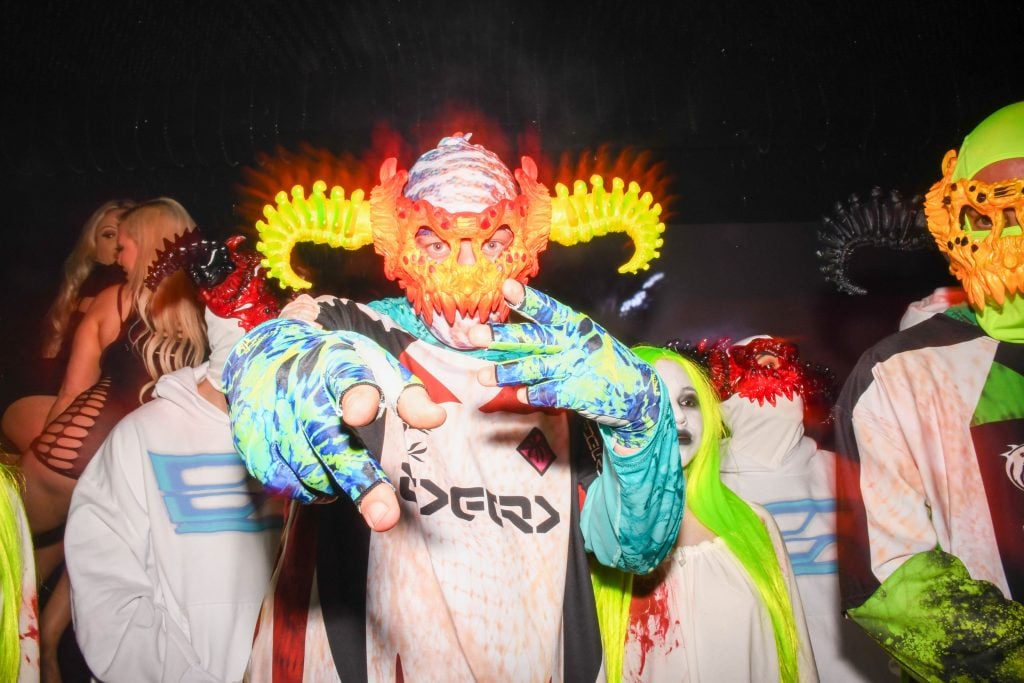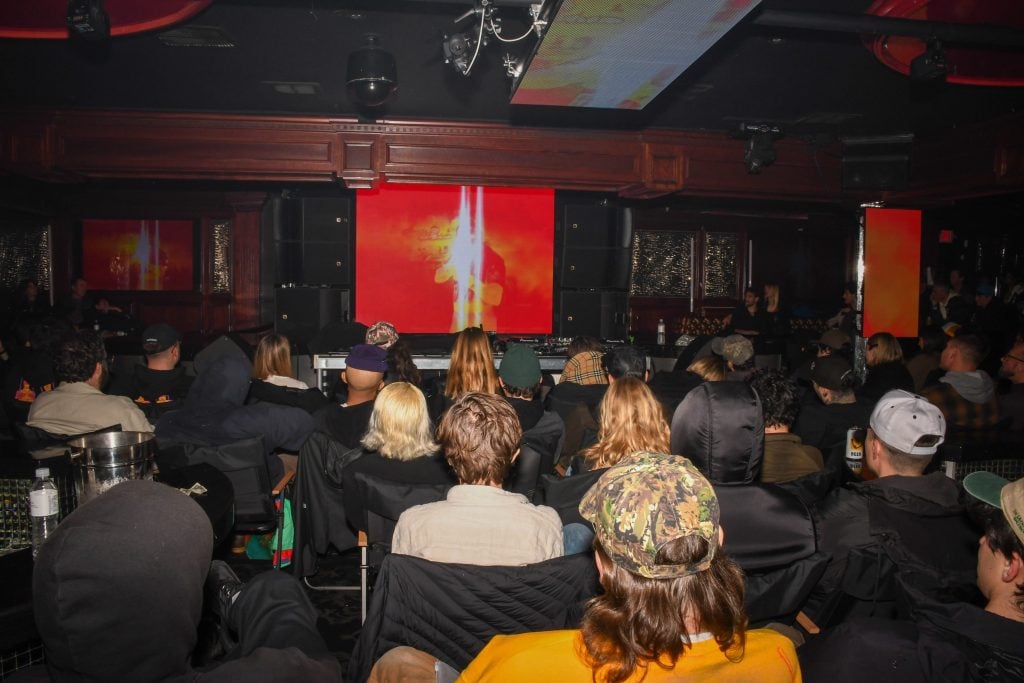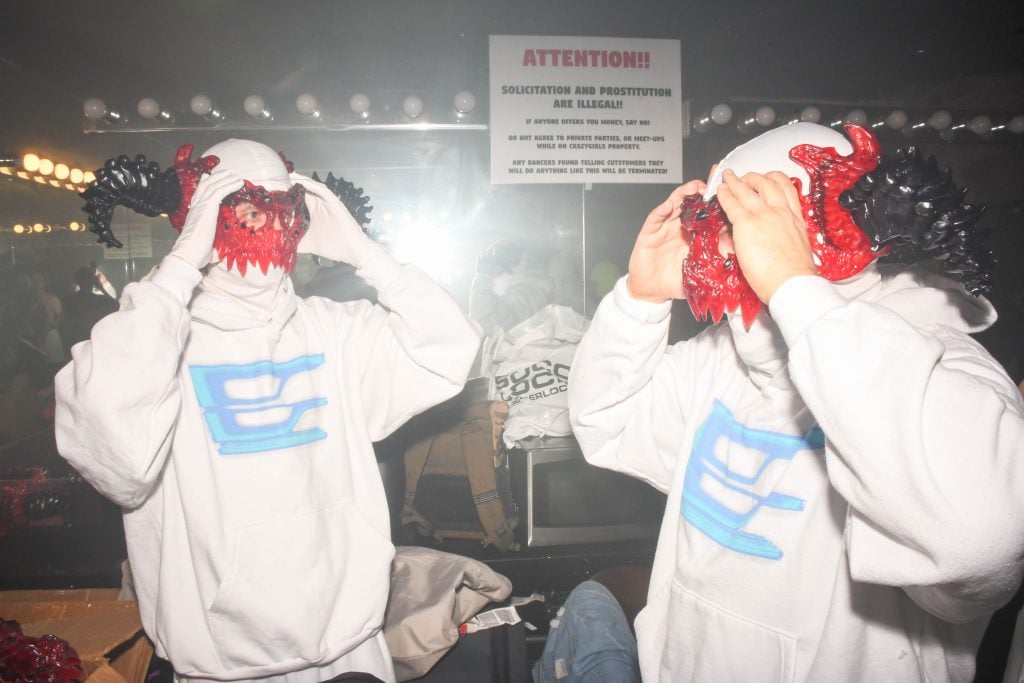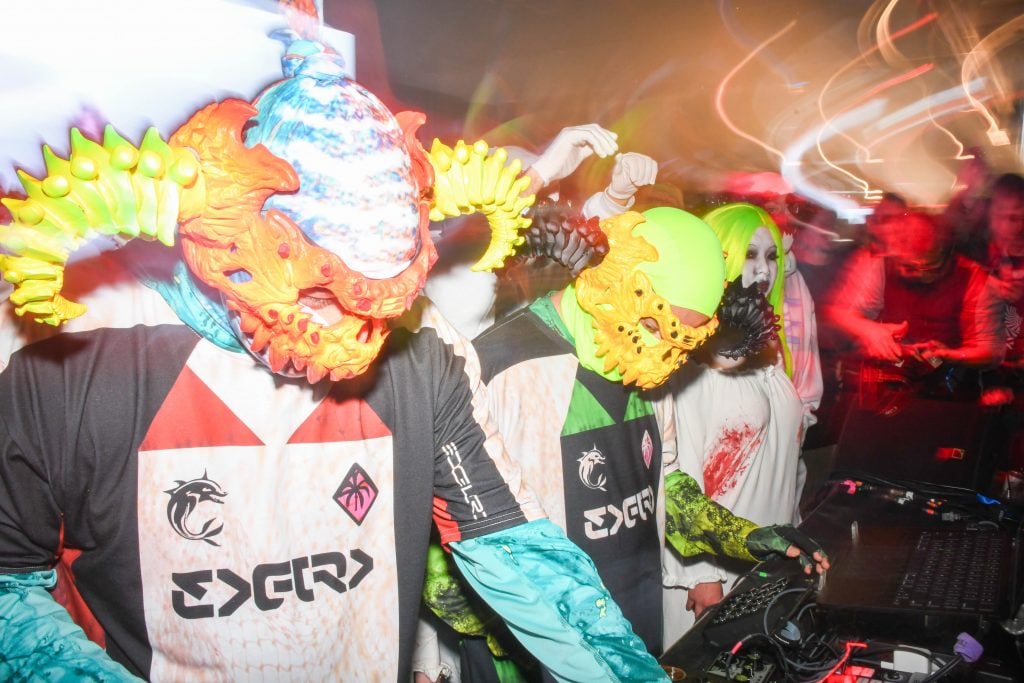Reviews
Harmony Korine’s L.A. Debut of His New Film ‘Aggro Dr1ft’ Was an Odd and Artistic Spectacle
At a Hollywood club, the filmmaker and artist found the ideal context for his polarizing Florida Noir film.

For two consecutive nights last week at the Hollywood club Crazy Girls, entertainment polymath Harmony Korine screened “Aggro Dr1ft,” the debut film of his Miami-based multimedia company EDGLRD. Shot entirely in infrared, the 80-minute film has both a retina-burning, acidic palette, as well as a 36-percent rating on Rotten Tomatoes. You might also recognize a few of its scenes from the DayGlo-colored paintings Korine made for his debut Hauser & Wirth show in Downtown L.A. in September.
If I had to sit through “Aggro Dr1ft” in a theater, sober, I might’ve hated it. Following its Venice Film Festival debut, critics immediately derided its tedious meandering, lack of character development, and general depravity—coincidentally all hallmarks of widely celebrated video art. Fortunately, I saw “Aggro Dr1ft” as it was actually meant to be seen, in the form of a multichannel installation in a strip club, the piece played on screens installed around the perimeter of the main stage and on the ceiling. With dancers in pasties working the poles and colored lights that blunted the finer visual details of reality, the venue transported us to the movie’s correct spiritual plane—that of male fantasy, where spectatorship has neither self-consciousness nor shame.

Courtesy of EDGLRD
The plot follows sympathetic hitman BO (Jordi Mollà) on his hunt for a demonic Florida crime lord, taking us through a lurid universe of gratuitous violence, poverty, opulence, dwarves, yachts, fist fights, and dancers with lit fireworks in their nether regions. Travis Scott, playing Zion, delivers a beautifully wistful, stoner performance, and it’s hard to believe he’s even acting.
On-screen, Korine’s infrared effects and limited dialogue function the same way, flattening characters and scenery to planes of color and simplified outlines. And it truly works, tuning the graphics and melodrama to the simplicity of a comic strip. In scenes like where BO slowly decapitates a villain with a small knife, the cartoonish rendering serves as a protective filter between the audience and the goriest details. In a venue full of semi-inebriated men, these visuals feel somehow less offensive—and to some, pretty laugh-out-loud funny!
The overexposure of the infrared burns the finer details out of the frame, but it also pulses and heaves; it creates a world of science fiction in the present day where everyone glows internally like a burning ember. The effect nicely serves what I’ll call Florida Noir, a hypothetical genre that Korine’s embraced and refined since moving to Miami nine years ago. Like film noir, it’s a melodrama of seedy underbellies and corruption, but amplified and distorted by the particularities of the Sunshine State. It’s where the tropics meet the American South—distinctly more lawless, freakish, colorful; more everything. It’s Baz Luhrmann’s “Romeo + Juliet,” “Grand Theft Auto 6,” and Janicza Bravo’s “Zola.” It’s the strip club and ornate floral patterns on men’s shirts. It’s Korine’s 2012 film, “Spring Breakers,” and it is James Franco, in cornrows, singing a Britney Spears ballad as the sun sets.

Courtesy of EDGLRD
Florida Noir is weird. It’s also the aesthetic realm Korine tried and failed to capture with his artworks at his inaugural solo show at Hauser & Wirth, where the movie’s most anodyne stills appeared more like posters than paintings. It was safe imagery rendered with a perfunctory handling of paint—the simple coloring-in of a picture rather than expressing paint’s actual capabilities. “AGGRESSIVE DR1FTER” was like an attempt to Google Translate the language of cinema into the language of painting—the latter of which Korine isn’t quite fluent in yet. In the language of video installation, the work suddenly speaks more clearly.
The transgressive ambitions of Korine’s practice, established long ago with the cult classic films “Kids” and “Gummo,” is in the lineage of Paul McCarthy and Hermann Nitsch—white guys similarly seeking spiritual release by diving further into the abject and male toxicity. They’re all also multidisciplinary artists with a performance practice, which brings us to the real reason I came to this screening: to catch EDGLRD reprise its now-iconic, FOMO-inducing Boiler Room set that I missed during Art Basel Miami Beach.

Courtesy of EDGLRD
This key part of the Korine universe came in the form of an outro: after the screening, shortly before midnight, Korine and his crew filed out onto the stage. There were about a dozen of them: dudes in white hazmat suits and demon masks with ram horns, petite women in ghost makeup and neon green wigs, and little people in Super Mario masks.
Korine and his D.J. friend were on the decks, also masked and horned. They opened with Sixpence None the Richer’s 1997 ballad Kiss Me. A girl in the front row rolled a blunt and passed it, then began pouring clear liquor into the mouths of interested parties. There were some Brazilian beats played, as well as Metallica’s Enter Sandman, a song sampled from the video game Legend of Zelda: Ocarina of Time, and something sleepier as a finale—it might have been Phil Collins, but it’s hard to remember. It was a contained chaos that reasonably ended by 12:45, which made me wonder if Hauser & Wirth might consider hosting this work in the gallery.
More Trending Stories:
A Case for Enjoying ‘The Curse,’ Showtime’s Absurdist Take on Art and Media
Artist Ryan Trecartin Built His Career on the Internet. Now, He’s Decided It’s Pretty Boring
I Make Art With A.I. Here’s Why All Artists Need to Stop Worrying and Embrace the Technology
Sotheby’s Exec Paints an Ugly Picture of Yves Bouvier’s Deceptions in Ongoing Rybolovlev Trial
Loie Hollowell’s New Move From Abstraction to Realism Is Not a One-Way Journey





